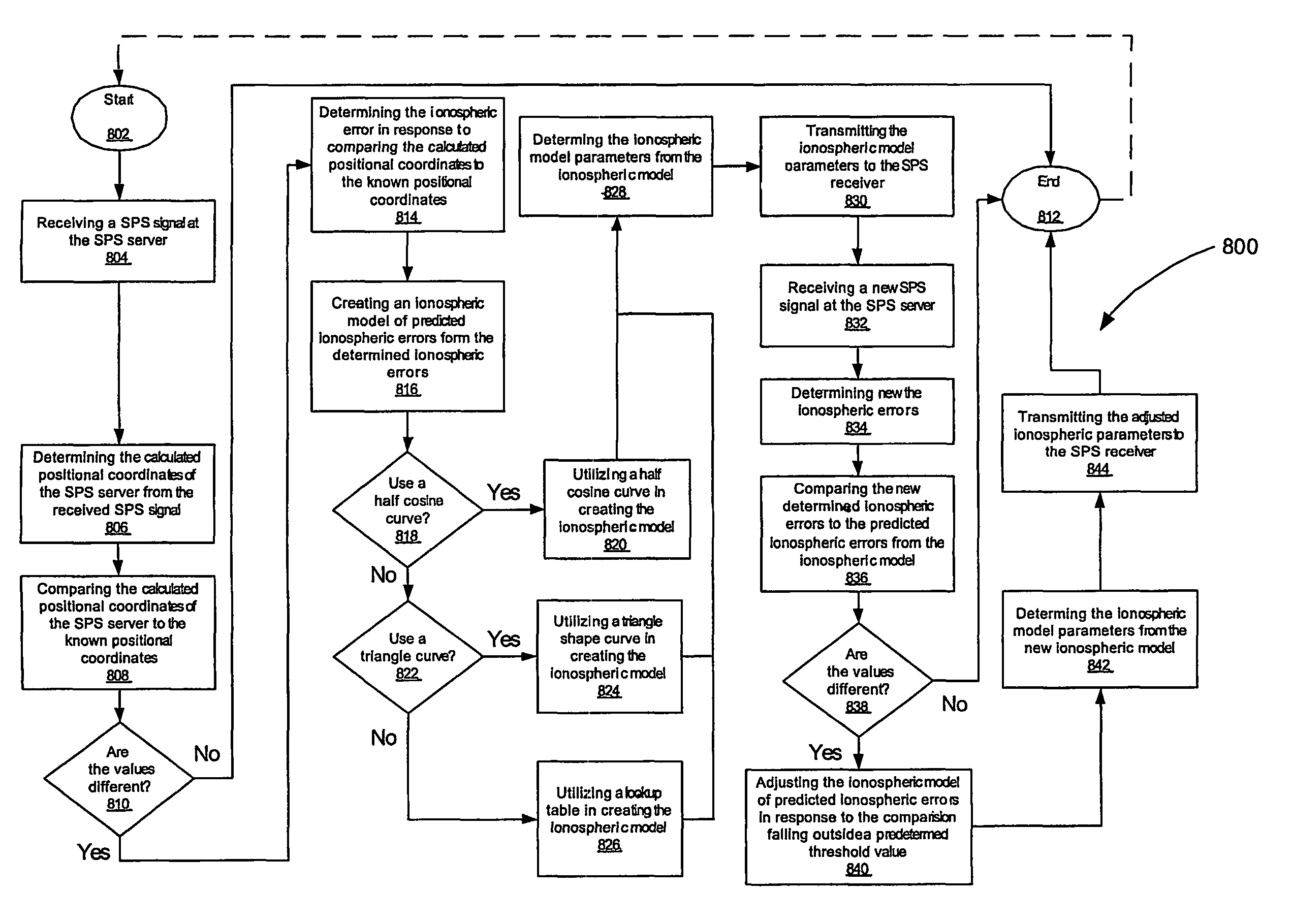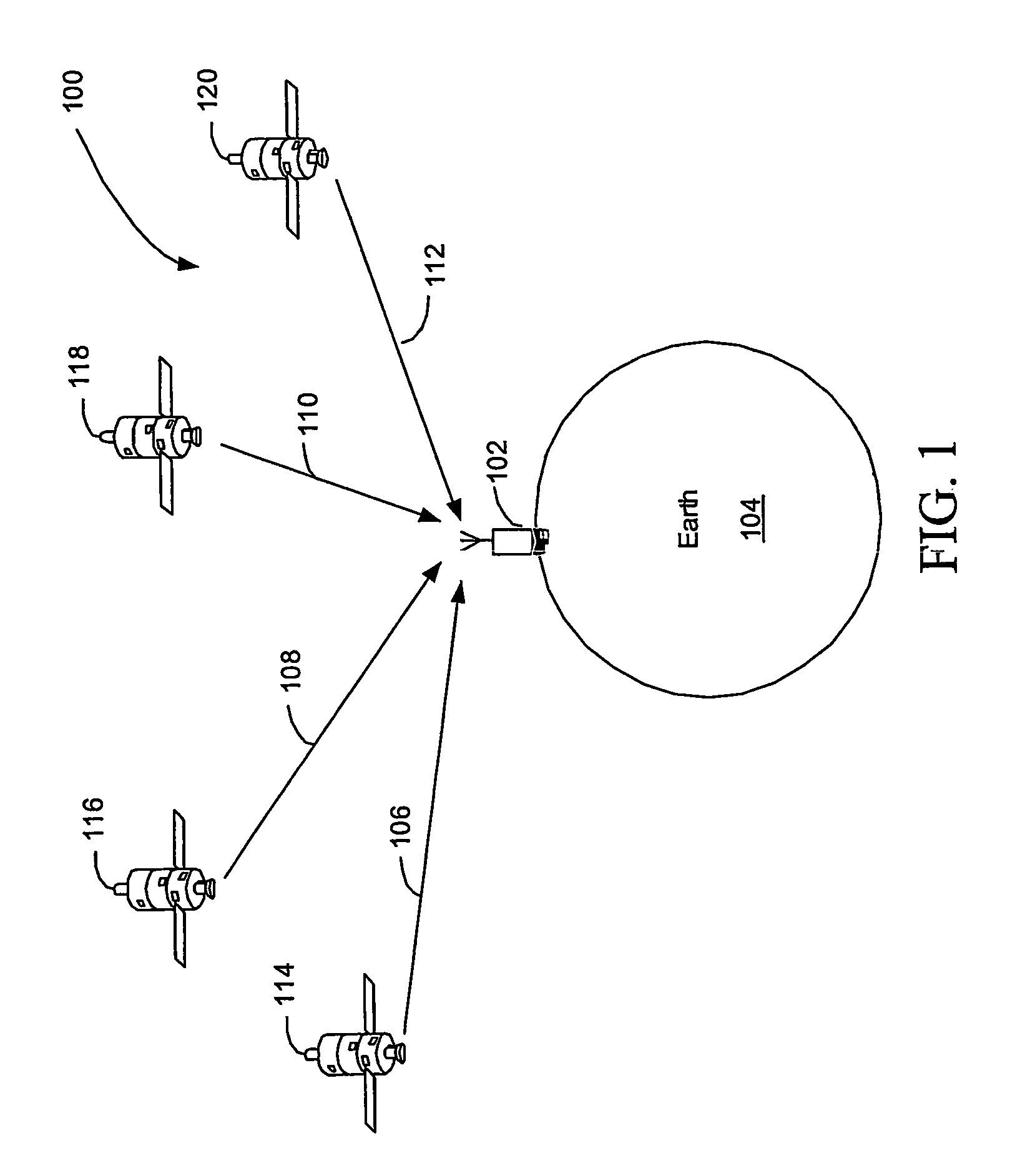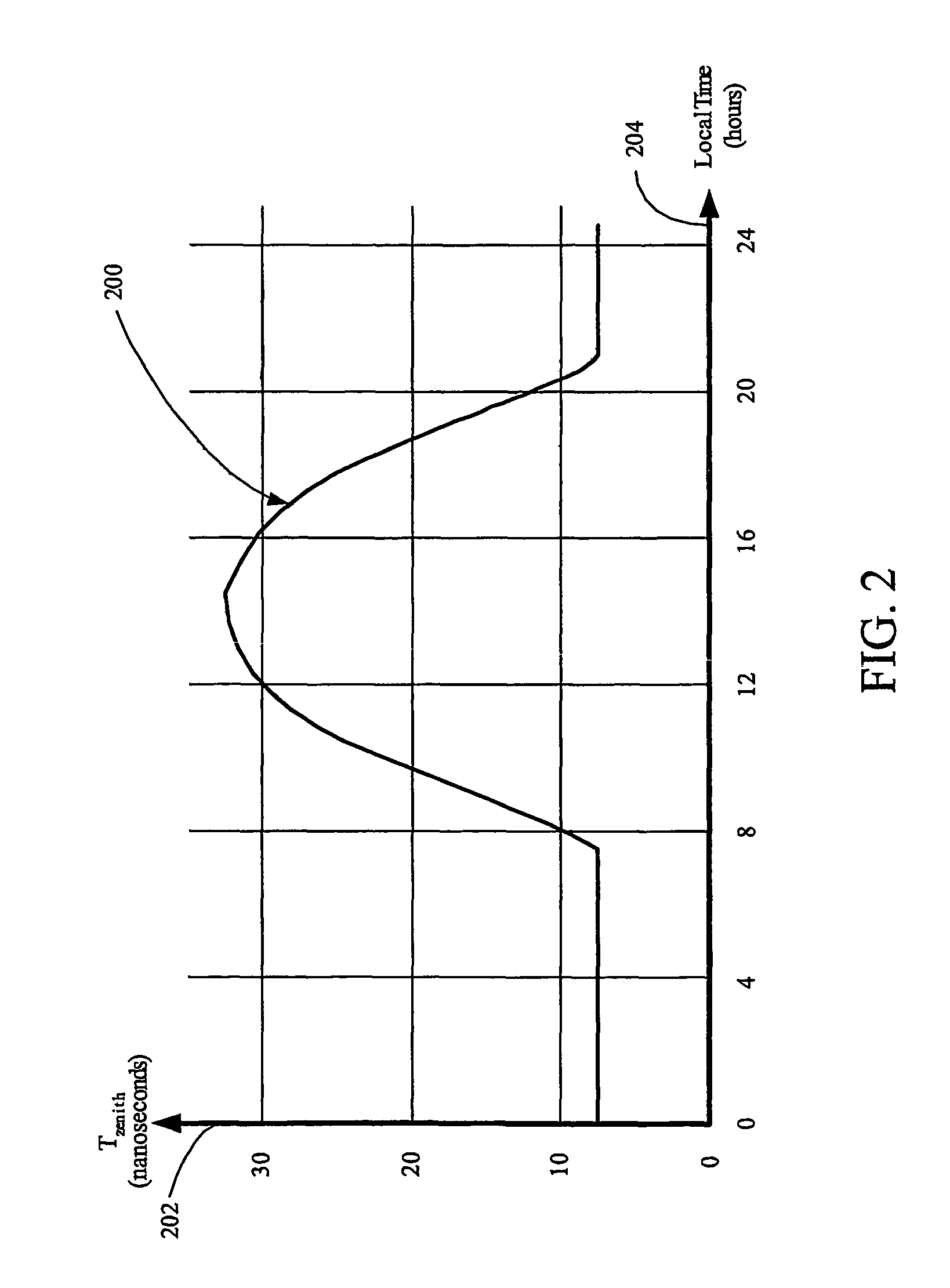Ionospheric error prediction and correction in satellite positioning systems
a satellite positioning system and error prediction technology, applied in the field of satellite positioning systems, can solve the problems of denying full system accuracy to non-authorized users, affecting the performance affecting the accuracy so as to reduce the frequency of message transmission and accurate determine the position of the sps receiver
- Summary
- Abstract
- Description
- Claims
- Application Information
AI Technical Summary
Benefits of technology
Problems solved by technology
Method used
Image
Examples
Embodiment Construction
[0040]In FIG. 4, a satellite positioning system (“SPS”) for predicting and compensating for ionospheric errors (“SPSPC”) 400 is shown having a SPS server 402 and a mobile SPS receiver 404. Both the SPS server 402 and mobile SPS receiver 404 are in signal communication with various SPS satellites 406, 408 and 410 via signal paths 412, 414, 416, 418, 420 and 422, respectively. Additionally, the SPS server 402 is in signal communication with the mobile SPS receiver 404 via signal path 424.
[0041]The SPS server 402 may include a server radio frequency (“RF”) front-end. 426, a SPS Server Module 428, a Server Communication module 430 and a SPS server bus 432. The SPS Server Module 428 may include a Server Position Calculation Module 434 in signal communication with the RF front-end 426, via signal path 436, a Server Ionospheric Error Modeling Module 438, Server Processor and / or Controller 440 and Server Storage Module 442. The Server Ionospheric Error Modeling Module 438, Server Processor ...
PUM
 Login to View More
Login to View More Abstract
Description
Claims
Application Information
 Login to View More
Login to View More - R&D
- Intellectual Property
- Life Sciences
- Materials
- Tech Scout
- Unparalleled Data Quality
- Higher Quality Content
- 60% Fewer Hallucinations
Browse by: Latest US Patents, China's latest patents, Technical Efficacy Thesaurus, Application Domain, Technology Topic, Popular Technical Reports.
© 2025 PatSnap. All rights reserved.Legal|Privacy policy|Modern Slavery Act Transparency Statement|Sitemap|About US| Contact US: help@patsnap.com



